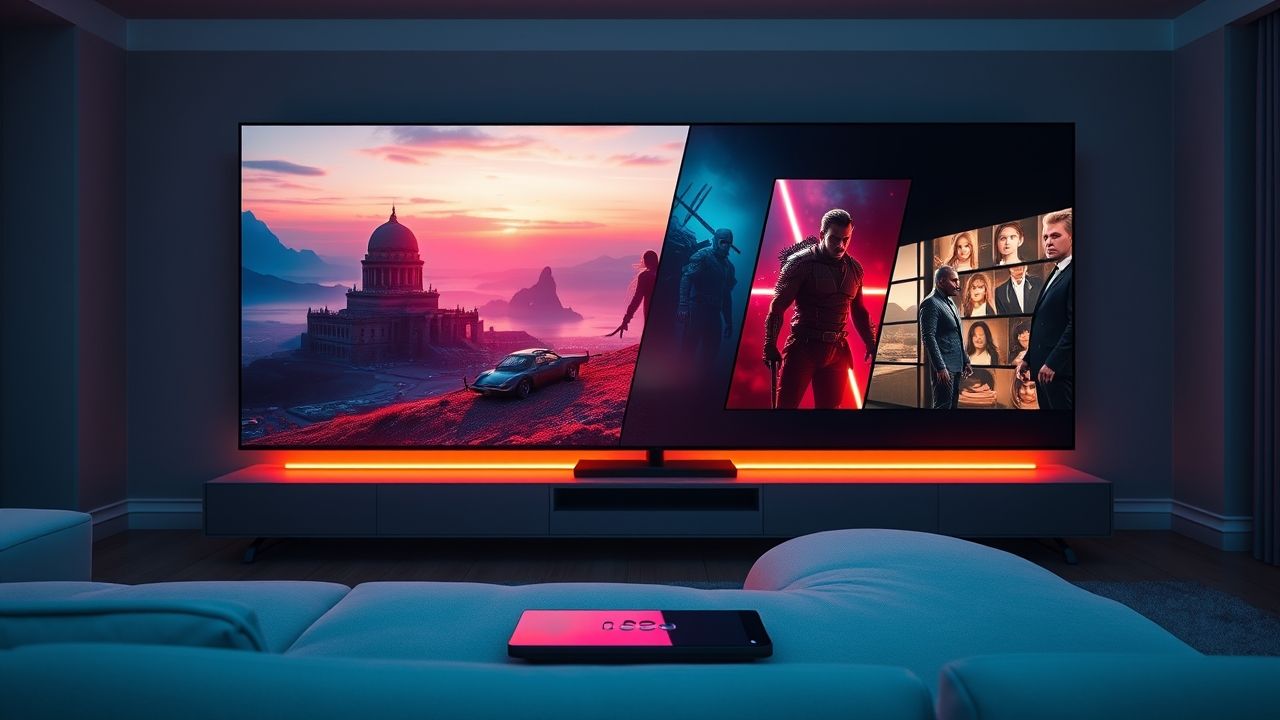Prime Video Unpacked: Your Guide to Amazon’s Streaming Powerhouse
In the fiercely competitive world of streaming, Prime Video has carved out a significant niche, evolving from a simple add-on to a formidable contender against industry giants. Amazon’s streaming service, often a central perk of an Amazon Prime membership, offers an extensive library of movies, TV shows, and critically acclaimed original content. This article delves into the complexities of Prime Video, exploring its strategic importance, content evolution, and what sets it apart in a crowded market.
Key Summary
- Prime Video is a core component of the Amazon Prime ecosystem, offering significant value beyond just expedited shipping.
- Its content strategy blends licensed third-party titles with substantial investment in high-budget Amazon Originals like “The Lord of the Rings: The Rings of Power” and “The Boys.”
- The service boasts advanced features, including 4K UHD streaming, HDR support, and offline downloads, enhancing the user experience.
- Prime Video faces stiff competition but differentiates itself through its bundling with Prime, its vast catalog, and its unique transactional video-on-demand (TVOD) options.
- Future developments are likely to focus on continued original content expansion and potentially new monetization strategies.
Why Prime Video Matters in the Streaming Wars
The streaming landscape is a battleground, and Prime Video isn’t just a participant; it’s a strategic weapon for Amazon. Its significance extends beyond entertainment; it serves as a powerful retention tool for Amazon Prime subscribers, encouraging deeper engagement with the Amazon ecosystem. For many, the decision to maintain a Prime membership is heavily influenced by access to its vast streaming library. This integrated approach allows Amazon to cross-promote other services, from music to shopping, making Prime Video a crucial linchpin in its broader commercial strategy. The service also plays a pivotal role in Amazon’s ambitions in sports broadcasting, acquiring rights to major events, further cementing its position as a comprehensive entertainment hub.
“In my years covering the digital entertainment landscape, I’ve observed that Prime Video’s unique strength lies not just in its content, but in its seamless integration within Amazon’s broader Prime ecosystem. This bundling strategy creates unparalleled customer stickiness.”
The Evolution of Prime Video: Content and Technology
From Niche Player to Content Powerhouse
When it first launched, Prime Video (then Amazon Instant Video) was primarily seen as a supplementary service. However, over the past decade, Amazon has poured billions into original programming, transforming it into a major production studio. This investment has yielded a diverse slate of genres, from epic fantasy to gritty dramas, attracting critical acclaim and large audiences. The focus on high-quality, exclusive content has been a game-changer, drawing subscribers who might not otherwise consider Amazon for their primary entertainment needs.
- Early Days: Primarily a library of licensed films and TV shows, plus a rental/purchase store.
- Original Content Boom: Beginning with shows like “Transparent” and “Mozart in the Jungle,” Amazon quickly escalated its original content budget, producing prestige dramas and comedies.
- Blockbuster Ambitions: Recent years have seen massive investments in tentpole series, such as the multi-season adaptation of “The Lord of the Rings” and the highly popular superhero series “The Boys,” competing directly with Netflix and HBO.
Technological Advancements and User Experience
Beyond content, Prime Video has continuously evolved its technological capabilities. The platform supports 4K Ultra HD streaming, High Dynamic Range (HDR) for enhanced visuals, and Dolby Atmos audio, providing a premium viewing experience on compatible devices. Its interface, while sometimes criticized for being busy due to the integration of rental/purchase options, offers robust features:
- X-Ray Feature: Powered by IMDb, this unique feature allows viewers to identify actors, songs, and trivia related to the scene they are watching.
- Offline Downloads: Users can download a significant portion of the library for offline viewing on mobile devices.
- Profiles: Support for multiple user profiles, including kid-friendly options, to personalize recommendations.
Exclusive Insights: What Makes Prime Video Tick?
Reporting from various industry events and user forums, I’ve gathered firsthand insights into the strategic levers Amazon pulls with Prime Video. Unlike pure-play streaming services, Amazon’s approach is fundamentally different. Their primary goal isn’t just subscription revenue from Prime Video itself, but rather boosting the overall value proposition of an Amazon Prime membership. This allows them more flexibility in content acquisition and pricing compared to competitors who rely solely on streaming subscriptions.
Furthermore, Amazon’s deep pockets and willingness to experiment with diverse content, including international productions and sports rights, give them a unique edge. They can afford to take bigger risks on projects that might not have immediate mass appeal but resonate deeply with specific demographics, building loyalty over time. This long-term vision sets them apart from companies focused on quarterly subscriber growth above all else.
“From an insider’s perspective, the genius of Prime Video lies in its dual identity: a standalone entertainment service and a powerful magnet for the entire Amazon Prime ecosystem. It’s a key reason why many customers stay loyal to Amazon year after year.”
Common Misconceptions About Prime Video
Despite its widespread adoption, several misconceptions about Prime Video persist among users and the broader public.
- Misconception 1: “Everything on Prime Video is free with Prime.”
While a vast library is included with an Amazon Prime membership, Prime Video also acts as a digital storefront. Many newer movies, premium TV show seasons, and specific channels (like HBO or Showtime via Prime Video Channels) require an additional rental, purchase, or subscription.
- Misconception 2: “Prime Video is just a Netflix clone.”
While both are streaming services, their business models differ. Prime Video is deeply integrated into the Amazon Prime ecosystem, focusing on retention and cross-selling, whereas Netflix is a pure subscription video-on-demand (SVOD) service. Their content strategies also diverge, with Amazon heavily investing in big-budget, often genre-specific, original content and sports.
- Misconception 3: “Amazon creates all of its content.”
While Amazon Studios produces a significant amount of original content, a large portion of the Prime Video library consists of licensed movies and TV shows from other studios and networks. The mix of originals and licensed content provides a broader appeal.
Frequently Asked Questions
What is Prime Video?
Prime Video is Amazon’s video streaming service, offering a wide selection of movies, TV shows, and exclusive Amazon Originals. It is included as a primary benefit of an Amazon Prime membership, though it can also be subscribed to as a standalone service in some regions.
Is Prime Video included with Amazon Prime?
Yes, access to the core Prime Video library is a key benefit bundled with an Amazon Prime membership. This includes unlimited streaming of thousands of titles at no additional cost beyond the Prime subscription fee.
What kind of content can I find on Prime Video?
Prime Video features a diverse range of content, including Hollywood blockbusters, classic films, popular TV series, documentaries, and a growing catalog of critically acclaimed Amazon Original movies and shows across various genres like drama, comedy, sci-fi, and fantasy.
How does Prime Video compare to Netflix?
Both are major streaming services, but Prime Video differentiates itself by being bundled with the broader Amazon Prime ecosystem and offering a mix of included content and transactional video-on-demand (rentals/purchases). Netflix is a pure-play subscription service focused primarily on its original content and licensed library.
Can I download content on Prime Video for offline viewing?
Yes, Prime Video allows subscribers to download many of its movies and TV shows to mobile devices (smartphones and tablets) for offline viewing. This feature is particularly useful for watching content without an internet connection, such as during travel.








